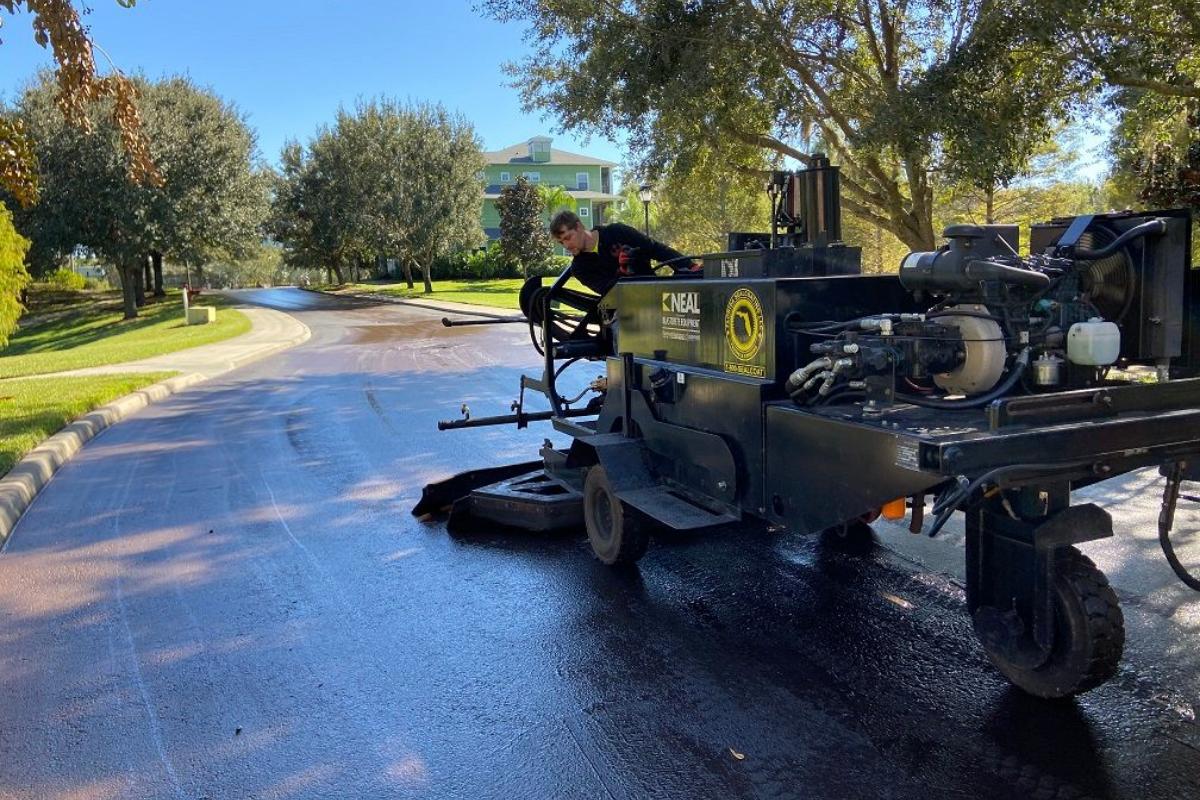
Sealcoating can sometimes be a difficult concept for people without paving knowledge to understand. However, it is not uncommon for people seeking asphalt repairs in Orlando to have valid questions and concerns about sealcoating. So, here are some of the questions that we are asked most often in the industry.
Asphalt pavement is made up of fine stones and sands, and asphalt cement acts as the glue to bind the stones and sands together, further providing the payment with the rich black color it is known for being. Unfortunately, exposure to the sun, snow, rain, vehicle fluids, and other elements causes the binder to oxidize. This often causes pavement to crack and fade to a shade of gray from steady traffic, exposure to motor oil leaks, or landscaping and household chemicals over time.
With this degradation of the existing pavement, sealcoating acts as a barrier, protecting the asphalt from rain, snow, harmful chemicals, and the sun's UV light rays.
In most cases, sealcoating can last on an existing asphalt surface for up to three years if the existing pavement is in great shape. However, older asphalt surfaces may need to be resealed annually to ensure longer-lasting results and avoid complete surface repaving.
Drying conditions for sealcoating depend on humidity, exposure to the sun, and temperatures, so drying time can vary based on these conditions. However, in many cases, you can walk on your sealcoated pavement within 4 to 8 hours. Also, depending upon the conditions mentioned above, it can be opened to vehicle traffic within 24 to 48 hours after the sealcoating is completed.
Natural wear and tear on sealcoated surfaces is often caused by freezing temperatures, sand, salt, rain, water runoff, and summer heat exposure. As a result, it is common for sealcoating to degrade on asphalt surfaces over time.
Although sealcoating can help prevent cracks in the pavement in the future, it is not designed to seal cracks or smooth out already existing rough asphalt surfaces. Therefore, before sealcoating can be applied effectively, the cracks and holes in the existing asphalt surface must be repaired. In addition, all dirt, debris, and vehicle leaks should be appropriately removed from the surface.
Sealcoating is best performed when the temperature is about 50 degrees Fahrenheit overnight. Unfortunately, this often means that the best time to sealcoat is between April and October in most locations. Because of temperature and weather fluctuations, it is critical to seek the expertise of a professional for asphalt repairs in Orlando and nearby areas. Although sealcoating is a much more affordable option for improving asphalt surfaces than repaving, not doing it under the best circumstances possible can result in wasting resources and needing to sealcoat again much sooner than expected.